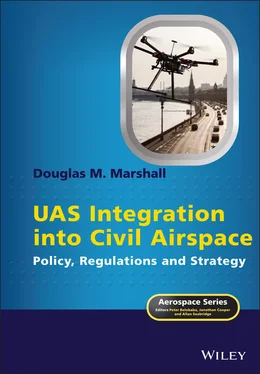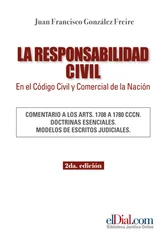Although the United States did not initiate the first efforts to create aviation safety regulations, the US system of regulations, whether aviation related or not, bears closer examination because the US is historically viewed as a leader in the evolution of aviation regulations world-wide. Regulations, and the supporting standards and guidance materials that help people and organizations comply with them, have been a core component of the legal system in the United States for nearly 150 years. Every federal regulatory agency promulgates rules that are intended to carry out the agency’s legislative mandates. State and local regulatory agencies or commissions act in much the same way.
Lawmakers in most countries generally do not have the luxury of time, expertise, or the resources to define and monitor every element of the particular industry or activity that they undertake to regulate through the enactment of laws that are national in scope. The agencies that the US Congress creates and funds, for example, are delegated the legislative powers that Congress has been granted by Article, Section 1 of the US Constitution. Those delegated powers are implemented through the rule-making process. The oldest federal regulatory agency that still exists in the US is the Office of the Comptroller of the Currency, which was created in 1863 to charter and regulate the nation’s banks. The modern era of federal regulation really began with the creation of the Interstate Commerce Commission (ICC) in 1887, which was directed to protect the public from excessive and discriminatory railroad rates. The regulation was economic in nature, by the setting of rates and by regulating how railroad services were to be provided. The ICC’s administrative model was that of an independent, bipartisan commission that used an adjudicatory approach to arrive at decisions on contested matters. This structure was adopted by several subsequently created agencies, such as the Federal Trade Commission (FTC), the Water Power Commission (later the Federal Power Commission), and the Federal Radio Commission (which became the Federal Communications Commission). Congress created several other agencies early in the 20th century to regulate commercial and financial systems – including the Federal Reserve Board, the Tariff Commission, the Packers and Stockyards Administration, and the Commodities Exchange Authority, all established before 1922. The Food and Drug Administration was created in 1931 to ensure that certain foods and drugs were fit for human consumption.
Many other federal regulatory agencies were created in the 1930s as part of President Franklyn D. Roosevelt’s “New Deal” programs. These included the Federal Home Loan Bank Board (1932), the Federal Deposit Insurance Corporation (FDIC) (1933), the Commodity Credit Corporation (1933), the Farm Credit Administration (1933), the Securities and Exchange Commission (SEC) (1934), and the National Labor Relations Board (1935). The jurisdictions of both the Federal Communications Commission (FCC) and the Interstate Commerce Commission were also expanded to regulate other methods of communications (e.g. telephone and telegraph) as well as other transportation modes (trucking, pipelines, and common carriers such as bus lines and telephones). The ICC was dissolved in 1995, and its remaining powers were reassigned to the Surface Transportation Board.
The United States’ first attempt to regulate commercial aviation arose out of the US Post Office’s commencement of airmail operations in 1918. The first published aviation regulations were released in 1926 by the Aeronautics Branch of the Department of Commerce, and were known as “Air Commerce Regulations.” They consisted of six chapters spanning 45 pages of text, and covered the areas of Licensing, Marking, and Operation of Aircraft, Licensing of Pilots and Mechanics, Air Traffic Rules, and were rounded out by a miscellaneous section. Aviation is indeed one of the oldest regulated industries or activities in the US. Presently the Federal Aviation Regulations (FARs) fill four volumes of the Code of Federal Regulations, consisting of over 460 sections filling more than 3600 pages, and totaling around 8400 regulations, counting major subparts and sections.
International Civil Aviation Regulations
Outside of the US, aviation regulations vary from country to country, as can be expected. Some countries have aviation rules and regulations similar to the US, but few, if any, are as comprehensive and voluminous. In Europe, for example, each individual country (Member State) has its own set of regulations, developed and enforced by their domestic civil aviation authorities (CAAs). An additional layer of safety rules falls under the regulatory and administrative jurisdiction of the European Aviation Safety Agency (EASA), an agency of the European Union (EU), established in 2002 and consisting of 31 Member States (27 European Union states plus Switzerland, Norway, Iceland, and Liechtenstein observer states). EASA’s role is to provide advice to the European Union for drafting new legislation, implementing and monitoring safety rules, including inspections in the Member States, type certification of aircraft and components, as well as the approval of organizations involved in the design, manufacture, and maintenance of aeronautical products, authorization of third-country (non-EU) operators, safety analysis, and research.
The European Organization for the Safety of Air Navigation, known as “EUROCONTROL,” is the entity that provides harmonized air navigation services across European skies, and is separate from EASA. In 2011 the European Union established another organization, the European Network of Civil Aviation Safety Investigation Authorities (ENCASIA), via Regulation No. 996/2010, whose “… mission is to further improve the quality of air safety investigations and to strengthen the independence of the national investigating authorities.” This organization makes safety recommendations to EASA, but does not create regulations. Thus, each member state has the option to create and maintain its own aviation safety organization with attendant powers to investigate accidents and impose sanctions on violators of their domestic regulations.
The 1944 Chicago Convention on International Civil Aviation (which created the International Civil Aviation Organization, ICAO) generally and comprehensively sets forth international standards and recommended practices for aviation (as provided in Article 37). Consistent with Article 26 of the Convention, Annex 13 deals with aircraft accident and incident investigation. The Annex states that investigation of serious accidents and incidents is to be conducted by the State where the accident or incident occurs, or where the State of Registry when the location of the accident or serious incident cannot definitely be established as being in the territory of any State. In addition, a State may delegate the task of conducting the investigation to another State or request its assistance. By virtue of this Annex, EASA should be invited to participate in a safety investigation “… in order to contribute, within the scope of its competence, to its efficiency and to ensure the safety of aircraft design, without affecting the independent status of the investigation. National civil aviation authorities should be similarly invited to participate in safety investigations.”
The foregoing structure is similar to the United States’ system, where all aviation regulations and air navigation services fall under the purview of one agency, the Federal Aviation Administration (FAA), a subdivision of the US Department of Transportation (DOT). However, investigations of aviation accidents are solely vested in another agency, the National Transportation Safety Board (NTSB), an independent agency of the United States Government, and, unlike the FAA, is not a sub-agency of the Department of Transportation. The NTSB has no regulatory or enforcement powers. In addition to investigating transportation accidents, the NTSB also provides administrative, quasi-judicial review process for FAA enforcement actions by Administrative Law Judges (ALJs), who preside over a wide variety of FAA enforcement matters. In summary, the major difference between the European and American systems is that each EU Member State creates its own aviation regulations, and commits to harmonizing their domestic regulations with EASA and EU aviation safety standards, as well as remaining in compliance with the International Civil Aviation Organization’s requirements. In contrast, there is only one overarching set of aviation regulations in the US, and the individual states generally have little or no power to create their own regulations. The legal and policy tug-of-war between state, local, and federal government regulatory power over aviation activities is controversial, falling under the broad theme of “preemption,” but that is a discussion for another book. Some state and local governments have enacted legislation that impact low-level (generally below 400 ft AGL) unmanned aircraft operations, and the extent to which they can do so without running afoul of federal law, and the FAA’s declared policy, has yet to be definitively decided in US courts. There is no such gray area between EU Member State regulations and the rules of the road established and agreed upon by the members of EUROCONTROL and EASA.
Читать дальше












